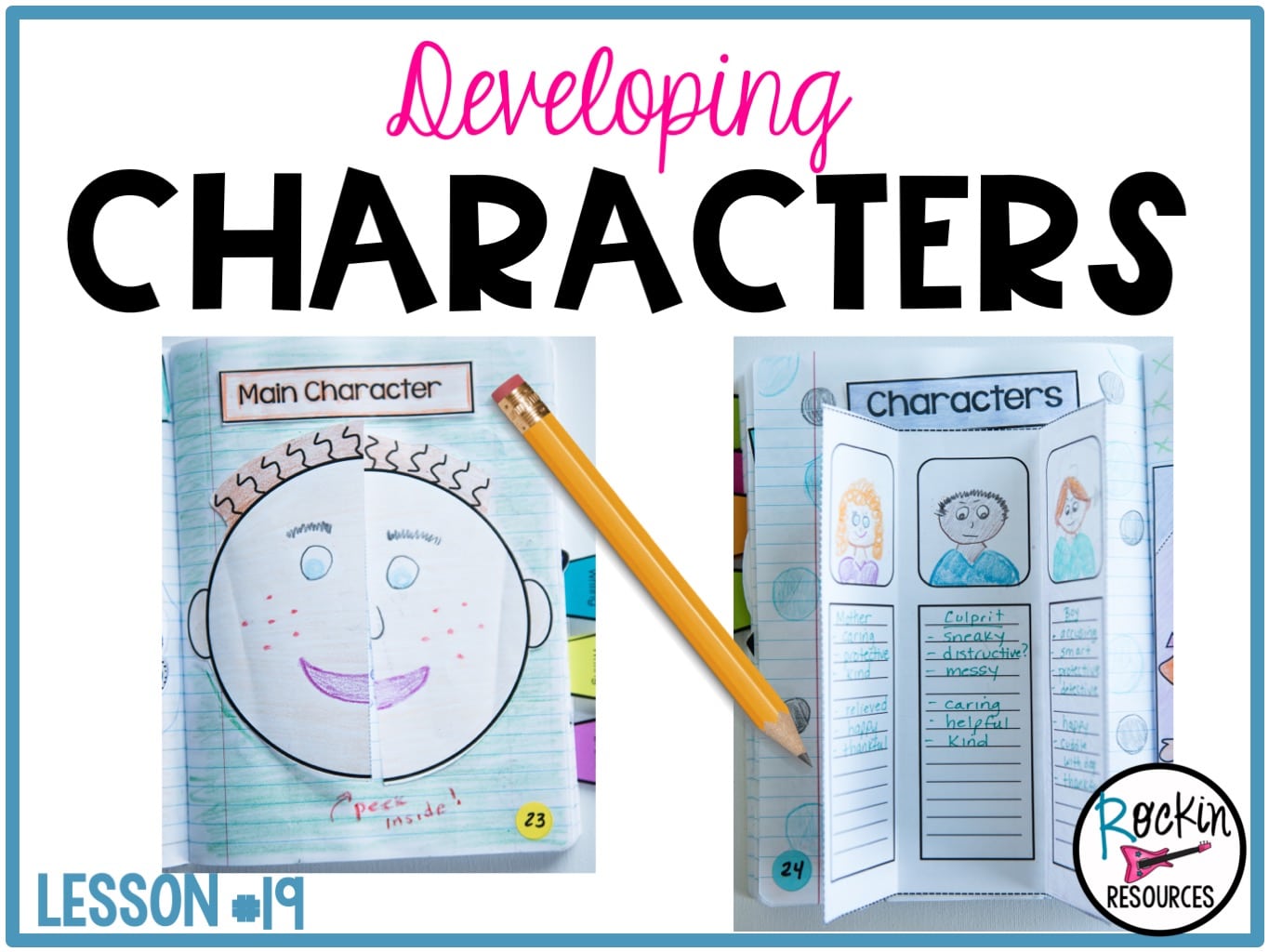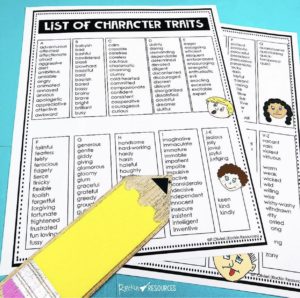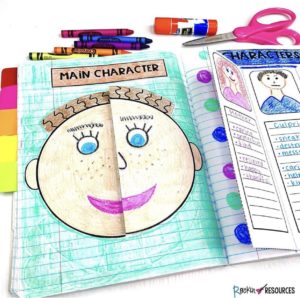Do you need help with ideas for teaching students how to develop characters in their narrative essays? This post will share an effective way to teach character traits and focus on developing characters in a narrative essay. These ideas are ideal for any writing curriculum and are part of a series of mini lessons for the writer’s workshop designed for scaffolding through the writing process.
Common Core Standard: We can apply grade level Reading standards to literature (e.g., “Describe in depth a character, setting, or event in a story or drama, drawing on specific details in the text {e.g., a character’s thoughts, words, or actions}.”)
1. TEACH
There are two kinds of traits:
1. Outside traits: Physical traits that you can actually see. (blonde, tall, messy hair, dirty clothes)
2. Inside traits: How the character feels or acts. (bossy, lonely, mysterious, thoughtful, clumsy)
To write a well-crafted paper, developing characters give your readers a deeper meaning of the story.
- Did they change in any way?
- Were they bossy at the beginning and then caring toward the end?
- Did something happen to cause this damage?
2. MENTOR TEXT
Teaching character traits and character development is so much easier using mentor text! In rich literature, authors craft their stories to feel like we know the characters. They create personalities and emotions within the characters. In turn, we develop feelings for them. Using these well-crafted stories, teachers can point out the different character traits and show students where the characters may take a turning point and change their actions.
Rotten Richie and the Ultimate Dare by Patricia Polacco
Read the book Rotten Richie and the Ultimate Dare. Richie teases his sister Tricia about taking ballet. Tricia knows how much work it takes, so she challenges Richie to perform in her ballet recital. Richie agrees, under one condition: Tricia has to join his hockey team for the big game! Richie’s character changes throughout the story as he realizes how difficult it is to perform ballet.
Changes in Richie: Teasing, belittling, disgusting to being respectful towards his sister’s hard work.
A list of mentor text for CHARACTER TRAITS: CHARACTER TRAITS MENTOR TEXT LIST
3. MODEL
Model a class story. Together, go through the characters and decide how they can change throughout the story.
Example: My main character is going to be jealous at the beginning. She wants to be like the popular girls at school. Ultimately, she realizes her talents and that she is just as special.
4. TAKE NOTES and LIST OF TRAITS
Students should take notes about character traits. Then, when they need help in the future, they can go back to their notes for a reminder. If you have a resource with a list of traits, they can add that to their writing folders, or you can place them in a writing center!
5. PRACTICE
SKITTLE ACTIVITY: Hand out a skittle to students and assign colors to a character trait or emotion. Whatever color they receive, they have to tell or write about how to change a character with that trait or emotion. When they finish, give them a handful!!!
Other ideas: Identify the character trait or character development in paragraphs like task cards or passages.
6. APPLY
Students will first brainstorm ideas for their main character. When students are finished developing the main character, work on the other characters in the story. I usually have my students pick three characters to develop. How will they change and develop over the course of the story? This is extremely helpful to keep the interest of the readers, and the readers will get to know the characters at a more personal level!
7. SHARE
Share, share, share. It helps to have students share their ideas! By sharing their character development with other students, they may be able to build their story even more. In addition, their ideas may spark ideas for other students to use in their writing!
I hope you enjoyed learning how to develop characters in narrative writing!
Check out my FREE writing masterclass! CLICK HERE
LAST LESSON: WRITING MINI LESSON #18- BUILDING SUSPENSE AND CLIMAX
NEXT LESSON: WRITING MINI LESSON #20- DIALOGUE IN A NARRATIVE ESSAY!
CLICK HERE FOR THE FULL LIST OF WRITING MINI LESSONS
This lesson is also included in the STEP-BY-STEP WRITING® Programwith mini-lessons designed to scaffold through the writing process. Writing units included are sentence structure, paragraph writing, narrative writing, opinion writing, and informative writing. See what is included in the image below and click on it to learn more about them! You will turn your reluctant writers into ROCKSTAR WRITERS™!
“Teaching writing is my weakness. I knew that, so spent my summer reading about it, exploring different resources, following blogs, etc. I purchased this one and I’m so pleased that I did. Not only is it teaching my students to be better writers, it’s helping me learn to be better at teaching writing. Thank you.” -Rachel T.
ROCK ‘N’ WRITE!!!!
Resources you may be interested in.
-
INTERACTIVE STEP-BY-STEP® WRITING PROGRAM ULTIMATE BUNDLE
Original price was: $379.00.$189.00Current price is: $189.00.











